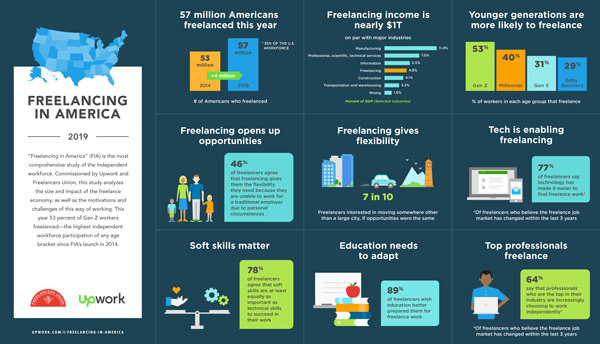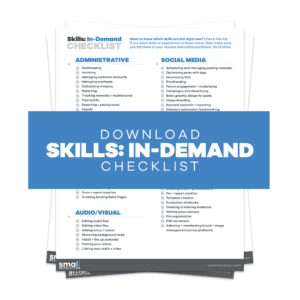
6 Easy Steps to Finding a Freelance Job
1. Define Your Target Market
The amount of work available to freelancers is endless, and it’s easy to get lost and confused in the online mayhem.Start by defining what your specific freelancing talent involves. Will you be writing about technology and commerce, or beauty and fashion? Will you create gaming apps or e-commerce websites?If you do not know what you’re looking for, it’s impossible to find it.“The first secret to getting what you want is knowing what you want.” — Arthur D. Hlavaty, Writer
2. Create a Portfolio
You may have some experience freelancing and have some content to showcase. Conversely, you may be a complete newbie without a single notch in your belt. Either way, it doesn’t matter. Everyone starts somewhere.Clients will ask for samples of previous work before hiring freelancers. Create a collection of your content for distribution.Taking the step into freelancing means you need to prove you are capable of providing the service you specialize in. This will work to make clients take your business seriously.Even without a portfolio, take the time to create content. Send it to potential clients to showcase the solutions you can offer them.It’s important to create a website or blog. This is where you can provide personal information and feature your work.3. Use Freelance Job Boards
Freelancing requires you to be proactive. Job boards are the obvious route when it comes to finding online work.The Internet provides thousands of useful websites and apps. This is where clients converge in search of freelancers. It is up to you to convince them to hire you.True, there is a lot of competition and the pay is not the best as you start out, but it is an opportunity to grow your portfolio.It is a chance to polish up your pitch before approaching bigger clients. As you gain experience, you can target higher-paying clients and earn more.Take advantage of these job sites by:- Contacting as many clients as possible.
- Researching each client and sending a personalized proposal. Do not send generic pitches.
- Reading all the instructions.
- Providing a solution to their problem in a short, succinct manner.
- Signing up for newsletters that will send you industry news, advice and freelance opportunities.
4. Work Social Media

- Search for relevant words such as freelance content creator or freelance web developer and join groups that feature jobs in your field.
- Define which companies you are interested in working for and keep an eye on their accounts.
- Post your availability as a freelancer on your profile regularly. Remember to keep it professional.
- Find fellow freelancers you can interact with who would be able to refer you to gigs.
5. Offer to Work for Free
This may sound counterintuitive, but if you have no prior experience and no work to showcase, this is one way to start creating both a portfolio and a reputation.Find a client to whom you can provide a unique offering. Send them a personalized message defining your capabilities and offering your services.Keep these tips in mind when working for free:- Make sure it is the kind of work you are comfortable doing, as it will set the basis for the rest of your freelance career.
- Do not sell yourself short in terms of expertise. Make sure the client knows your capabilities and appreciates your professionalism.
- Insist on a testimonial at the end of the project and the possibility of referrals. This is the whole point of working for free!
- Determine your normal working rate before starting the project. If the client needs your services in the future, they know not to expect another freebie.
6. Send Out Cold Pitches
Anyone who has ever been in sales knows how difficult (and scary) this can be. You are approaching a stranger with a proposal, and you can only hope they are interested in what you have to offer. Or that they will even read it.The truth is, it’s not as hard as it seems. It is purely a matter of research. And spending a lot of time finding viable clients.Locate businesses you feel you can provide your service to. Prepare a personalized message describing your solution and send it off.They may not respond at first, so simply follow up, but do not become a stalker. Use your judgment to decide when you have sent enough emails. The best pitches include details such as:- Who you are
- What you can offer
- How you found out about the business
- How you can help the business
Subject Line: [Company Name] [Your Service]Body: Hey/Greetings [First Name],I wanted to reach out to let you know I appreciate the [company offerings] coming out of [Company Name].I am reaching out because I am interested in working with brands like [name your dream clients] and others to help scale [your service offering].Would you be available for a chat about [Company Name’s] [your service offering] or connecting me with someone else on your team?See the below link/attachments to my portfolio and previous work.Thanks in advance.[Your Name]
This is the most generic form of a pitch, and should work only as a base. You need to flesh it out to make it effective.It is advisable to do research on each company before sending an email. Include specific details about their products and services and reference their current business trends.

